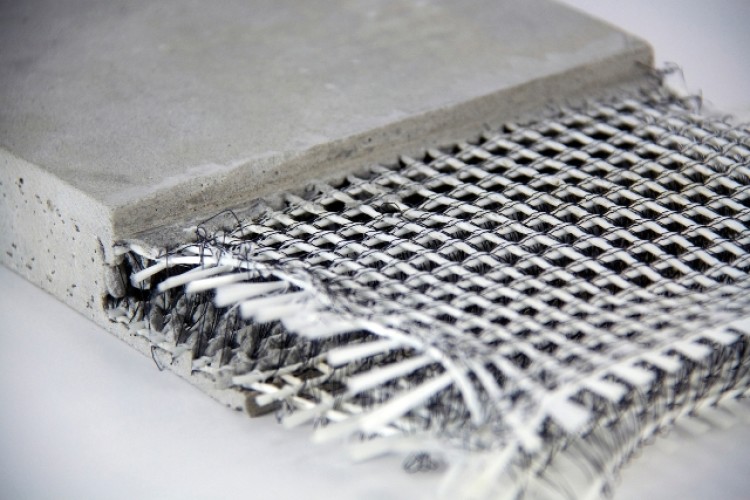Innovative Composites in Modern Building Projects
Innovative Composites in Modern Building Projects
Blog Article
Opening the Ecological Benefits of Recycled Compounds in Building And Construction and Design
In the realm of construction and design, the use of recycled composites holds significant pledge for improving sustainability techniques and minimizing ecological impact. The change in the direction of a much more sustainable future in these markets pivots on unlocking the full possibility of recycled composites.

Ecological Influence Decrease
The reduction of ecological impact via making use of recycled composites in construction and layout plays a crucial function in sustainable techniques. By incorporating recycled composites into structure products, the building industry can significantly decrease its carbon impact and add to an extra environmentally friendly future. These sustainable materials, made from repurposed plastics, wood fibers, or other recycled elements, offer a sensible choice to typical building and construction materials without jeopardizing on high quality or longevity.
Recycled composites aid draw away waste from garbage dumps and decrease the need for extracting resources, therefore saving natural deposits. In addition, the manufacturing procedure of these compounds commonly takes in less energy and releases less greenhouse gases contrasted to creating virgin products (composites). This shift towards using recycled composites not only decreases ecological injury but likewise promotes a round economic situation by encouraging the reuse of products that would certainly otherwise be discarded
Waste Minimization
With a concentrate on lessening waste in building and style, the integration of recycled compounds provides a sustainable option to minimize environmental impact. Waste reduction is an essential element of sustainable techniques, and the usage of recycled compounds provides a possibility to attain this goal successfully. By making use of materials that have actually currently served their first function, such as recycled plastics or redeemed wood fibers, the building and construction and style sectors can dramatically decrease the quantity of waste generated and sent to land fills.
Recycled composites have the prospective to divert significant amounts of waste from typical disposal methods, adding to an extra circular economic climate where sources are used successfully. Additionally, the manufacturing process of recycled compounds commonly eats much less power and produces fewer exhausts compared to virgin materials, further decreasing the environmental footprint of construction and design tasks.
Carrying out waste reduction methods with the consolidation of recycled composites not only aids in preserving natural deposits but also advertises an extra sustainable method to building and designing for a greener future.
Energy Conservation
Integrating recycled composites not only minimizes waste in building and construction and layout but likewise plays an essential function in improving energy preservation practices within the industry. The use of recycled composites in building and construction can substantially add to power conservation with different means. Firstly, the manufacturing of virgin products generally needs considerable energy inputs, whereas utilizing recycled composites eats less energy, thereby minimizing general blog energy usage. Additionally, including recycled composites can add to much better insulation properties in structures, decreasing the demand for extreme heating or additional reading air conditioning, and subsequently lowering power usage for environment control. The light-weight nature of lots of recycled composites can lead to lighter frameworks, needing less energy for transportation and installation. By advertising using recycled compounds in construction and design, the sector can make considerable strides towards attaining energy performance and lowering its carbon footprint, inevitably adding to a much more sustainable developed environment.
Carbon Footprint Reduction
Enhancing sustainability practices through the usage of recycled composites in construction and style dramatically lowers the carbon impact of the industry. By incorporating recycled products right into the manufacturing of composites, the demand for virgin resources reduces, causing reduced power intake and greenhouse gas emissions connected with standard manufacturing procedures. This decrease in carbon impact is crucial in combating climate change and promoting a much more environmentally friendly technique to building and layout.
The carbon footprint decrease accomplished through the adoption of recycled compounds lines up with the global press in the direction of sustainable practices and the decrease of commercial emissions. Ultimately, by focusing on the combination of recycled composites, the industry can make substantial strides in reducing its carbon footprint and adding to a more lasting future.
Lasting Future
The integration of recycled compounds in building and construction and layout not just addresses immediate ecological problems yet also lays a solid foundation for a sustainable future in the industry. By incorporating recycled composites into building products and products, the construction basics and style sectors can significantly lower their reliance on virgin sources, bring about an extra round economic situation. This change towards sustainability is essential for reducing the ecological influence of conventional construction methods, which usually lead to high degrees of waste generation and resource exhaustion.

Verdict
Finally, recycled composites provide significant environmental benefits in building and construction and layout by lowering environmental effect, reducing waste, preserving energy, reducing carbon impact, and promoting a lasting future. Embracing the usage of recycled composites can contribute to an extra environmentally-friendly technique to building and design, ultimately leading to an extra sustainable and greener future for all.
The reduction of ecological effect with the use of recycled compounds in building and construction and design plays an essential duty in sustainable practices.With an emphasis on lessening waste in building and construction and design, the integration of recycled composites provides a lasting solution to minimize environmental impact. By advertising the use of recycled compounds in building and construction and design, the market can make significant strides in the direction of attaining energy effectiveness and lowering its carbon footprint, ultimately adding to a more sustainable developed atmosphere.

Report this page